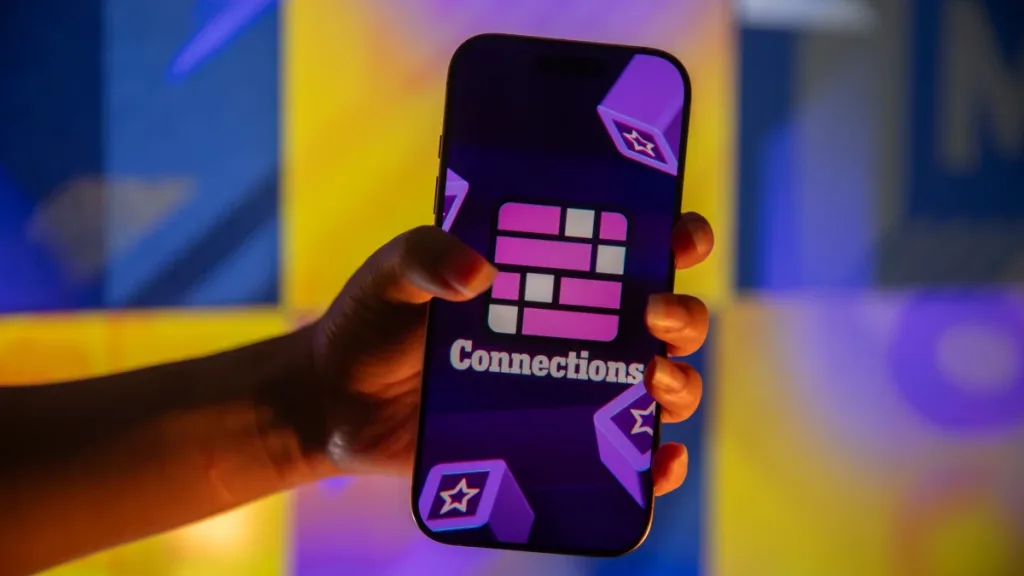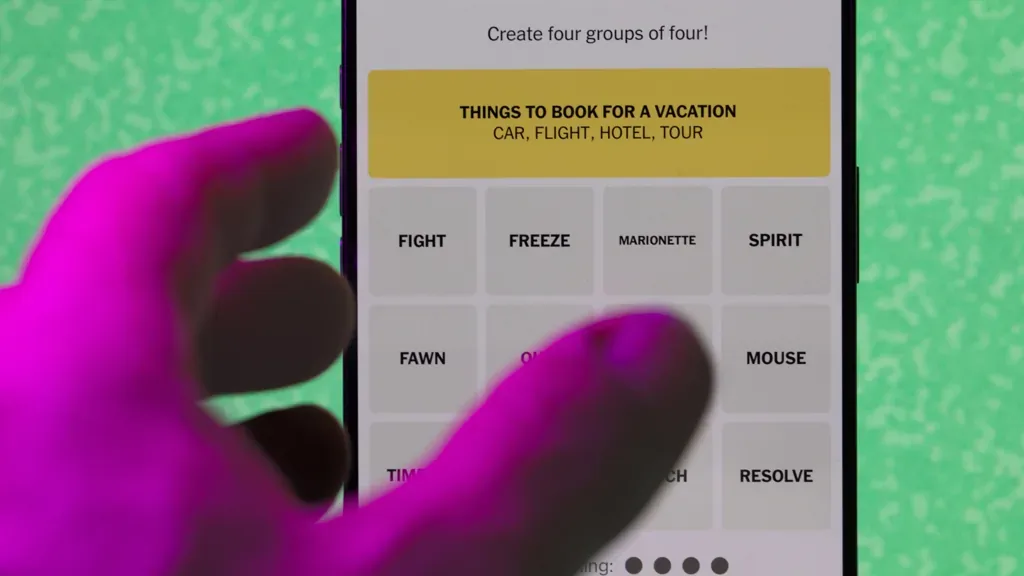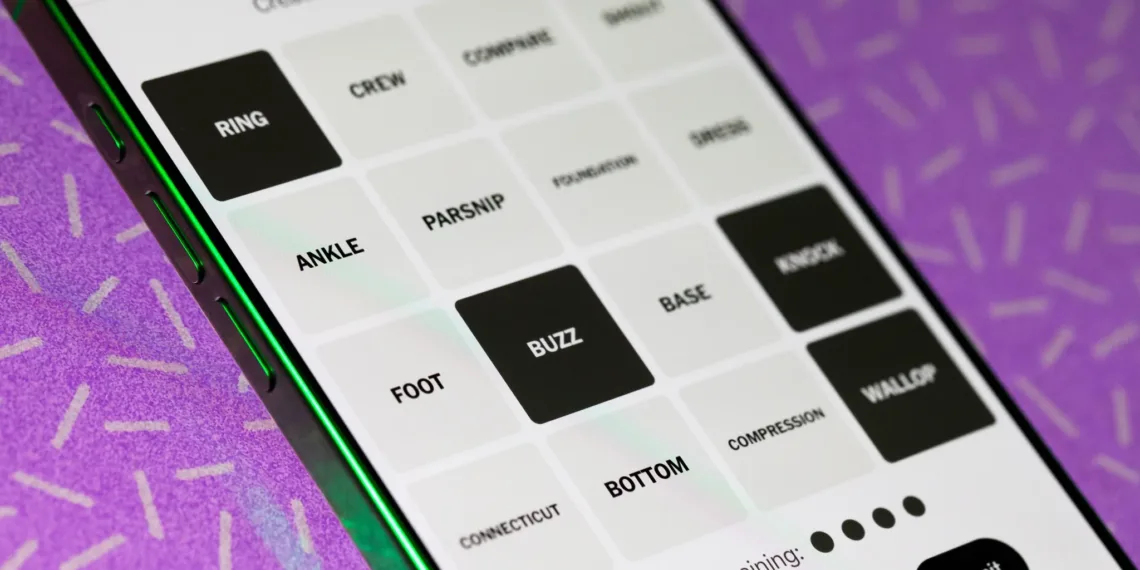Struggling with today’s NYT Connections puzzle? You’re not alone! Game #776 for July 26, 2025, presents an intriguing mix of categories that range from everyday activities to tricky wordplay. Whether you’re stuck on the purple category or need a gentle nudge for the yellow group, we’ve got you covered with hints, strategies, and complete solutions.
Table of Contents
NYT Connections 16 Words at a Glance
The July 26 Connections puzzle features these 16 words arranged in a 4×4 grid: LUXE, TREK, BOTTLE, WARS, COPE, ANISE, SARA, KELLY, SAGE, MARCH, HUNTER, MACE, HIKE, PEA, DILL, and TRAMP.
At first glance, these words might seem completely random, but that’s the beauty of Connections – finding those hidden links that bring seemingly unrelated terms together.

Strategic Hints by Difficulty Level
From the Yellow category being the easiest to the hardest Purple one, the game can quickly become difficult if you’re unprepared. Here are progressive hints to guide you through each category:
| Category | Difficulty | Hint | Think About |
|---|---|---|---|
| Yellow | Easiest | Different terms for walking | Physical movement on foot |
| Green | Easy | Secret ingredients of recipes | Kitchen seasonings |
| Blue | Medium | Varied tones of nature | Specific color variations |
| Purple | Hardest | Major cities overseas | European geography puzzle |
Detailed Category Hints
Yellow Category (Easiest): Think about various ways people move around without vehicles. These are all methods of traveling on foot, whether for exercise, exploration, or simply getting from point A to point B.
Green Category (Easy): These connect through kitchen essentials – specifically herbs and spices that add flavor to cooking. If you enjoy cooking or have a well-stocked spice rack, this category should feel familiar.
Blue Category (Medium): This category focuses on color variations within a specific hue family. Think about different shades you might see in nature or use to describe colors in everyday life.
Purple Category (Hardest): This is where wordplay comes into action. The connection involves starts of European capitals – but not in the way you might initially think. Consider how these words might relate to famous European city names.
For more puzzle-solving strategies and daily gaming tips, check out our puzzle games section.

Complete Solutions and Explanations
YELLOW – TRAVEL ON FOOT:
- HIKE, MARCH, TRAMP, TREK
- These are all ways to walk or travel by foot, whether for recreation, military purposes, or exploration.
GREEN – HERBS AND SPICES:
- ANISE, DILL, MACE, SAGE
- Common cooking ingredients that add flavor to dishes. Anise has a licorice-like taste, dill is popular in European cuisine, mace comes from nutmeg, and sage is a traditional herb.
BLUE – SHADES OF GREEN:
- BOTTLE, HUNTER, KELLY, PEA
- These are all specific shades of green: bottle green, hunter green, kelly green, and pea green. Each represents a distinct variation within the green color family.
PURPLE – STARTS OF EUROPEAN CAPITALS:
- COPE, LUXE, SARA, WARS
- The trickiest category! These words are the beginning parts of European capital cities: Copenhagen (COPE), Luxembourg (LUXE), Sarajevo (SARA), and Warsaw (WARS).
Why This Puzzle Was Challenging
Today’s Connections categories were quite interesting, as the first two categories were quickly guessable, and the last two threw players off on a completely different tangent. The purple category was particularly devious because it required recognizing truncated versions of city names rather than obvious connections.
The misdirection was especially strong with words like “WARS” and “SAGE,” which could easily fit into military or wisdom-related categories that don’t actually exist in today’s puzzle.
Pro Tips for Future Puzzles
Start with Obvious Connections: Look for the most straightforward relationships first. Today’s herbs and spices category was relatively clear once you identified one or two members.
Beware of Red Herrings: Connections will often use ambiguous words, and the sneaky editor deliberately puts word placement as misdirection. Don’t get trapped by your first instincts – sometimes the most obvious connection isn’t the right one.
Use the Shuffle Feature: Press that Shuffle button before you try solving it. Rearranging the grid can help you see patterns you missed in the original layout.
Think Beyond Surface Meaning: Purple categories especially require lateral thinking. Today’s European capitals connection required recognizing partial city names rather than complete words.
For more daily puzzle solutions and gaming strategies, visit our daily gaming updates.
Managing Your Four Guesses Wisely
Connections only gives you four chances in 24 hours for a single puzzle. Here’s how to make them count:
- First Guess: Try your most confident category (usually yellow or green)
- Second Guess: Go with your second-strongest hunch
- Third Guess: Use process of elimination from remaining words
- Fourth Guess: Your final shot – make it count!
Remember, wrong guesses that are one word off still provide valuable information about which words don’t belong together.
What Makes Today’s Puzzle Special
The July 26 puzzle showcases Connections’ ability to blend everyday vocabulary with clever wordplay. The mix of concrete concepts (herbs, colors) with abstract connections (city name fragments) demonstrates why this game has become such a phenomenon.
The European capitals category particularly stands out for its creativity – it’s not enough to know geography; you need to recognize how city names can be broken down into component parts.
Stay updated with our comprehensive word puzzle coverage for daily solutions and advanced strategies.
Building Your Connections Skills
Each day’s puzzle teaches valuable pattern recognition skills. Today’s combination of straightforward categories with one major curveball is typical of the Connections experience – just when you think you’ve got it figured out, the purple category throws you for a loop.
The key to consistent success is developing flexibility in how you think about word relationships and not getting locked into your first interpretation of what words might mean or represent.
You can practice with previous puzzles using the official NYT Connections archive to sharpen your skills and recognize common category types.
Frequently Asked Questions
Q: Why is the purple category always the hardest in NYT Connections? A: The Purple category is the hardest NYT Connections category to solve because it typically involves wordplay, abstract concepts, or lateral thinking rather than straightforward associations. In today’s puzzle, recognizing that “COPE,” “LUXE,” “SARA,” and “WARS” are beginnings of European capital cities requires both geographical knowledge and the ability to see partial word patterns – a much more complex mental process than identifying herbs or colors.
Q: What’s the best strategy for solving Connections puzzles consistently? A: Start with the most obvious category first (usually yellow), and remember that simplicity is key – the answer almost always lies in the simplest connections possible. Use the shuffle button to break up potentially misleading visual patterns, and don’t rush your guesses since you only get four attempts. Focus on finding one complete category at a time rather than trying to solve multiple categories simultaneously, as this helps avoid mixing up words between similar themes.








